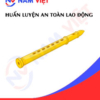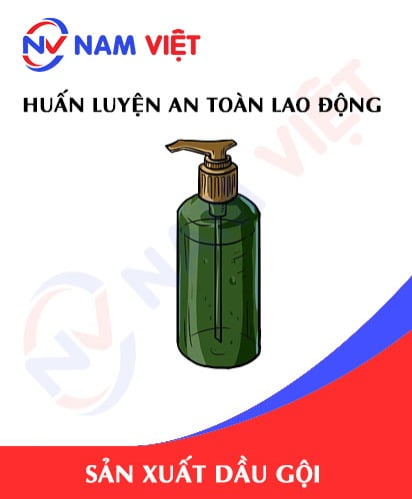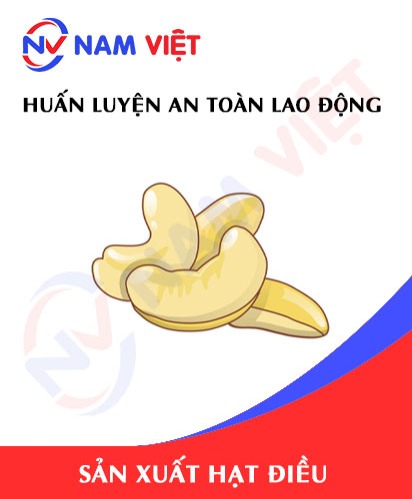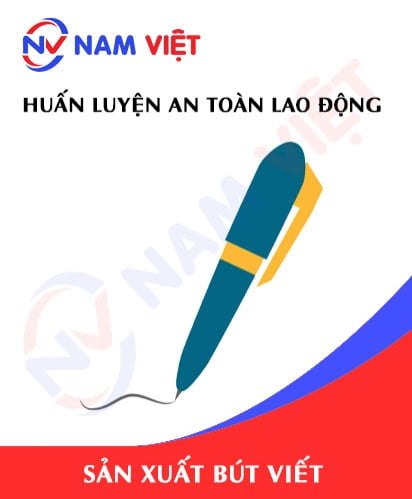Occupational Safety Training for Drum Manufacturing
99,000 ₫
Note: The above price is calculated per person and may vary depending on the number of trainees participating in the course and market fluctuations. For more accurate pricing support, please refer to the pricing table or contact our consulting staff directly.
Occupational safety is an important issue in drum manufacturing factories and needs to be addressed promptly to ensure the health and safety of workers and enhance the reputation of businesses. The Occupational Safety Training course is one of the effective solutions to raise awareness on how to prevent workplace accidents for workers involved in drum production.
Table of Contents
Toggle1. Overview of Drums
a. What is a Drum?
A drum is a percussion instrument commonly used across many cultures worldwide to produce rhythm and sound. There are various types of drums, but generally, they consist of a round frame (usually made of wood or metal) and a drumhead (typically made from animal skin or synthetic materials) stretched tightly over the frame. When struck, sound is produced by the vibration of the drumhead.
Drums play an important role in many music genres, from traditional folk music to modern styles like pop, rock, jazz, and hip-hop. In orchestras and bands, drums not only keep the beat but also add distinctive and rich sound elements to the music. Additionally, drums are used in religious ceremonies, festivals, and community events, creating a lively atmosphere and connecting people.
Playing drums requires dexterity and flexibility of the hands, along with the ability to coordinate rhythmically between different body parts. Drummers must have a good sense of rhythm and control their striking force to create diverse sounds. Drums are not only musical instruments but also an important part of culture and art, contributing to the development of music and performing arts worldwide.

b. Machinery Used in Drum Production
1. Wood Cutting and Shaping Machines
- Band Saw: Used to cut large wood blocks into panels of suitable size for the drum shell.
- Milling Machine: Shapes wood panels into curved or straight pieces according to the drum shell design.
2. Wood Bending Machines
- Steam Bending Machine: Uses steam to soften wood and bend it into cylinders or other shapes for the drum shell.
3. Turning and Sanding Machines
- Wood Lathe: Spins and sands drum shells to achieve desired size and shape.
- Sanding Machine: Smooths the surface of drum shells after turning and sanding.
4. Drilling and Hole Punching Machines
- CNC Drilling Machine: Drills precise holes for drum hardware such as hoops, screws, and drumhead tension systems.
5. Drumhead Cutting and Adhesive Machines
- Drumhead Cutting Machine: Cuts drumheads from sheets of material (animal skin or synthetic) into accurately sized circles.
- Adhesive Machine: Attaches the drumhead to the drum shell or hoops.
6. Pressing and Compression Machines
- Hydraulic Press: Used to press and compress parts of the drum, especially to firmly attach the drumhead to the shell.
7. Painting and Finishing Machines
- Automatic Spray Painting Machine: Paints and finishes the drum surface with protective and decorative coatings.
- Drying Oven: Dries paint and finishing materials to ensure durability and quality of the final product.
8. Quality Testing Machines
- Tension Testing Machine: Checks drumhead tension and ensures proper installation.
- Sound Testing Machine: Tests drum sound and makes adjustments as needed to achieve desired tones.
9. Packaging Machines
- Packaging Machine: Packs finished drums into boxes or packaging for protection during transport and storage.

c. Famous Drum Brands
1. Yamaha
- Origin: Japan
- Highlights: Yamaha is renowned for high-quality drum kits suitable for beginners and professional musicians alike. Their products are praised for durability, elegant design, and rich sound.
- Popular lines: Yamaha Stage Custom, Yamaha Recording Custom.
2. Pearl
- Origin: Japan
- Highlights: Pearl is one of the world’s largest drum brands, famous for acoustic and electronic drum kits. Known for innovation, diverse designs, and superior sound quality.
- Popular lines: Pearl Export, Pearl Masterworks.
3. Ludwig
- Origin: USA
- Highlights: Ludwig is a long-established, famous drum brand. Its drums have a distinctive sound and have been used by legendary drummers such as Ringo Starr of The Beatles.
- Popular lines: Ludwig Classic Maple, Ludwig Black Beauty.
4. Tama
- Origin: Japan
- Highlights: Tama is known for robust, durable drum kits with modern designs. The brand stands out for creativity in design and high sound quality.
- Popular lines: Tama Starclassic, Tama Imperialstar.
5. Gretsch
- Origin: USA
- Highlights: Gretsch is famous for warm, rich-sounding drums often used in jazz and rock music.
- Popular lines: Gretsch USA Custom, Gretsch Catalina Club.
6. DW (Drum Workshop)
- Origin: USA
- Highlights: DW is among the premium drum brands, known for custom kits tailored to players’ requests, with meticulous craftsmanship and high quality.
- Popular lines: DW Collector’s Series, DW Performance Series.
7. Mapex
- Origin: Taiwan
- Highlights: Mapex offers highly valued drum kits suitable for various levels, from beginners to professionals, known for diversity and creative designs.
- Popular lines: Mapex Saturn, Mapex Armory.
8. Roland
- Origin: Japan
- Highlights: Roland is a leading brand in electronic drums, known for advanced technology, customizable sounds, and natural playing feel.
- Popular lines: Roland V-Drums, Roland TD-50KV.
9. Sonor
- Origin: Germany
- Highlights: Sonor is known for high-quality drums with classic design and rich sound, often used in classical and jazz music.
- Popular lines: Sonor SQ2, Sonor Vintage Series.
10. PDP (Pacific Drums and Percussion)
- Origin: USA
- Highlights: PDP is a subsidiary brand of DW, offering affordable yet high-quality drum kits popular among beginners and semi-professional drummers.
- Popular lines: PDP Concept Series, PDP Mainstage.

d. Specific Jobs in a Drum Manufacturing Factory
Group 1
- Executive directors, deputy directors, and department heads in the drum manufacturing factory.
Group 2
- Safety officers: manage factory safety, design safety procedures, supervise and enforce employee compliance with safe working protocols.
Group 3
- Wood Lathe Operators: Turn and sand drum shells to achieve desired sizes and shapes.
- Sanding Workers: Sand drum parts to ensure smooth surfaces ready for painting and finishing.
- Assembly Workers: Assemble drum components, including attaching drumheads to shells and installing hardware such as hoops, screws, and tension systems.
- Painting Workers: Paint and finish drum surfaces with protective and decorative coatings.
- Drying Workers: Operate drying ovens to cure paint and finishes, ensuring durability and quality of final products.
- Quality Control Technicians: Inspect parts and finished products to ensure compliance with quality and sound standards, using tension testers, sound testers, and other measuring devices.
- Sound Testers: Test drum sounds and adjust as needed to achieve desired tones.
- Packaging Workers: Pack finished drums into boxes or packaging to protect them during transport and storage.
Group 4
- Office work, service, sales, marketing.
- Production management, quality management, human resources management, materials management, financial and accounting management.
- Research and development of new products, packaging and design.
2. Overview of the Drum Production Occupational Safety Training Course
In this article, we focus on issues related to Group 3 because Group 3 consists of workers directly involved in production who face the highest occupational safety risks. For more information on other groups, see here.
a. What is Group 3 Occupational Safety Training?
- Group 3 Occupational Safety Training consists of sessions that provide workers with awareness and methods to prevent occupational accidents.
- The training course helps workers identify and avoid hazards, reducing the risks of accidents during work.
REGISTER FOR OCCUPATIONAL SAFETY TRAINING SERVICE
b. Training Duration
Initial occupational safety training duration
- Total training time is at least 24 hours, including testing time.
- 8 hours of theory on occupational safety and hygiene policies and laws
- 8 hours of theory on basic knowledge of occupational safety and hygiene
- 4 hours of theory on specialized training content
- 2 hours of practical training on specialized content
- 2 hours of theoretical examination at the end of the course
The training center will schedule the course into multiple sessions depending on worker availability. Usually, there are 6 sessions over 3 days, provided the company arranges continuous learning time.
Periodic occupational safety training duration
- Before the occupational safety card expires, workers who wish to renew must undergo periodic occupational safety training with a duration of at least 50% of the initial training time.
Explanation: The total periodic occupational safety training time is at least 12 hours, including testing time. After completing the periodic training and passing the exam, workers will be reissued or have their occupational safety card extended.
c. Training Course Content
| No. | TRAINING CONTENT | TRAINING DURATION (HOURS) | |||
| Total | Including | ||||
| Theory | Practice | Test | |||
| I | Policies and laws on occupational safety and hygiene | 8 | 8 | 0 | 0 |
| 1 | Overview of legal documents on occupational safety and hygiene. | 6 | 6 | ||
| 2 | Standards and technical regulations on occupational safety and hygiene. | 1 | 1 | ||
| 3 | Specific regulations from state management agencies regarding occupational safety and hygiene in new construction, expansion, or renovation of facilities for production, usage, storage, preservation, and inspection of machines, equipment, materials, and substances with strict safety and hygiene requirements. | 1 | 1 | ||
| II | Basic knowledge of occupational safety and hygiene | 8 | 8 | 0 | 0 |
| 1 | Basic knowledge of hazardous and harmful factors at the workplace. | 4 | 4 | ||
| 2 | Methods to improve working conditions. | 1 | 1 | ||
| 3 | Safety culture in production and business. | 1 | 1 | ||
| 4 | Rights and obligations of employers and employees; policies and regimes on occupational safety and hygiene for workers; functions and duties of safety and hygiene network staff. | 1 | 1 | ||
| 5 | Occupational safety and hygiene regulations, safety signs, safety instructions, use of safety equipment and personal protective equipment; skills in first aid for occupational accidents, prevention of occupational diseases. | 1 | 1 | ||
| III | Specialized training content | 6 | 4 | 2 | 0 |
| Comprehensive knowledge of machines, equipment, substances generating hazardous factors; risk analysis, management of occupational safety and hygiene; safe working procedures with machines, equipment, and substances requiring strict occupational safety and hygiene compliance. | 6 | 4 | 2 | ||
| IV | Final occupational safety training exam | 2 | 2 | 0 | 0 |
| Total | 24 | 22 | 2 | ||
See more training contents of the 6 groups
d. Occupational Safety Card
After completing the occupational safety training and passing the exam, workers will be issued an occupational safety card (commonly called the occupational safety certificate for Group 3).
The Group 3 safety card clearly shows information such as full name, date of birth, job, and specific working environment. It also includes training duration, a red stamp, and signature confirming course completion.
According to regulations on safety card issuance specified in Clause 2 of Article 24 of Decree 44/2016/ND-CP, there are two cases:
- If the employer and employee have a labor contract, the employer must sign, stamp, and countersign the safety card for Group 3 workers after they complete the training course from the occupational safety training unit and pass the exam.
- If the worker is freelance, seasonal, or does not have a labor contract, the training unit must sign, stamp, and countersign the safety card after the worker completes the training course and passes the exam.

3. Identifying Hazards Affecting Workers in Drum Production
Machine-Related Hazards
- Saws and lathes:
- Hazards: Cutting or injuring hands and fingers.
- Sanding machines:
- Hazards: Wood dust may harm the respiratory system and damage the skin.
- Hydraulic presses:
- Hazards: Injuries caused by crushing or pinching.
Material-Related Hazards
- Wood and composite materials:
- Hazards: Debris or fragments can cause injuries.
- Composite materials and chemicals:
- Hazards: Chemicals used in paint and glue may harm the skin and respiratory system.
Production Process-Related Hazards
- Noise:
- Hazards: High noise levels from machinery may cause hearing loss.
- Vibrations:
- Hazards: Machinery vibrations can affect workers’ muscles and joints.
Assembly and Transportation Hazards
- Lifting and moving heavy objects:
- Hazards: Back and muscle injuries caused by improper lifting techniques.
- Hand tools:
- Hazards: Incorrect use may cause injuries to hands and fingers.
Quality Inspection and Finishing Hazards
- Paints and finishing chemicals:
- Hazards: Chemicals can cause skin burns or poisoning.
- Sound inspection:
- Hazards: Loud and continuous sounds can harm hearing.
Maintenance and Repair Hazards
- Machine repair:
- Hazards: Risk of electric shock and mechanical injuries.
- Equipment maintenance:
- Hazards: Exposure to moving machine parts.

4. Safety Measures When Participating in Drum Production
Training and Education
- Occupational safety training: All employees must be trained on safety procedures, machine operation, and hazard recognition.
- Regular drills: Organize periodic training sessions to update knowledge and new safety skills.
Personal Protective Equipment (PPE)
- Helmet: Protects the head from falling objects.
- Safety glasses: Protects eyes from dust, debris, and chemicals.
- Gloves: Protects hands from cuts, chemicals, and heat.
- Protective jackets and pants: Protect the body from mechanical impacts and chemicals.
- Safety shoes: Protect feet from heavy falling objects and provide slip resistance.
- Noise-cancelling earplugs: Protect ears from loud and continuous noise.
Technical Measures
- Machine guards: Install guards on saws, lathes, and other machinery to prevent accidents.
- Dust extraction system: Install dust extraction systems at cutting and sanding areas to reduce inhalation of wood dust.
- Ventilation: Ensure good ventilation in chemical use areas to minimize inhalation of toxic fumes.
Safety Procedures and Regulations
- Safe work procedures: Establish and adhere to safe work procedures, including machine operation and handling hazardous materials.
- Safety signs: Place warning and safety instruction signs in hazardous areas and on machinery.
- Regular inspections: Conduct routine inspections of machinery and equipment to ensure they are always in safe working condition.
Accident Prevention Measures
- Lockout/Tagout: Use lockout/tagout systems to prevent unexpected machine start-ups during maintenance.
- Fire prevention and firefighting: Equip firefighting devices, plan evacuation routes, and conduct regular fire drills.
- First aid: Provide first aid kits and train employees in basic first aid skills.
Monitoring and Evaluation
- Safety supervision: Assign personnel responsible for supervising safety compliance within the factory.
- Risk assessment: Conduct regular risk assessments to identify and minimize new hazards.
- Accident reporting and investigation: Establish procedures for reporting and investigating workplace accidents to learn lessons and improve safety measures.
- Regularly conduct work environment monitoring in factories, collecting and analyzing harmful factors affecting workers, thereby adjusting to reduce hazards to prevent occupational diseases.
Continuous Improvement
- Employee feedback: Encourage employees to contribute ideas on occupational safety and improve working procedures.
- Equipment upgrades: Invest in new safety equipment and technology to enhance worker protection.
- Evaluation and improvement: Regularly review safety measures and implement improvements when necessary.
5. Benefits of Occupational Safety Training for Drum Production
An Toan Nam Viet provides your enterprise with the following great benefits after completing occupational safety training courses as regulated by Decree 44/2016/ND-CP on Occupational Safety and Hygiene work for companies, factories, and enterprises.
- Workers can recognize potential risks of occupational accidents and thus take preventive measures to avoid accidents.
- Your enterprise can establish risk prevention measures in production, operation, and maintenance processes.
- Minimize costs incurred due to occupational safety hazards.
- Uninterrupted production process helps increase labor productivity and product quality.
- Comply fully with occupational safety laws, avoiding legal risks.
- Create credibility and professionalism in all aspects, thereby elevating your enterprise’s brand.
Nam Viet’s training courses are solutions to prevent external factors from impacting individuals so they can avoid dangers that could lead to injury or worse, death.
REGISTER FOR OCCUPATIONAL SAFETY TRAINING SERVICE
6. Customer Feedback After Completing the Drum Production Occupational Safety Training Course
An Toan Nam Viet has many years of experience in accompanying numerous businesses across Vietnam in general and in the southern provinces in particular. This responsibility is extremely valuable to Nam Viet, which is why the Occupational Safety Training at Nam Viet is increasingly professionalized. The motivation for An Toan Nam Viet’s growth comes from the positive feedback and suggestions from businesses. Below are some testimonials from our valued partners we have served.
Bac Nam E&C Investment Construction Joint Stock Company
“The first time using An Toan Nam Viet’s service, I was very surprised by the 24/7 enthusiastic support from the consulting team. The class organization was quick and convenient for our company, thank you very much for Nam Viet’s service!”
Hoa Dat Construction and Trading Joint Stock Company
“Nam Viet’s service helped us greatly in simplifying occupational safety and completing safety documentation for the working process. The consulting team was enthusiastic and timely in answering our questions. 5 stars for Nam Viet.”
See more customer interviews after using An Toan Nam Viet’s services
7. Occupational Safety Training Capacity of An Toan Nam Viet
An Toan Nam Viet is a reputable and quality occupational safety training center in Vietnam today. Our training sessions are continuously held at production workshops, factories, or construction sites across the country (all 63 provinces of Vietnam).
REGISTER FOR OCCUPATIONAL SAFETY TRAINING SERVICE
Occupational safety training license
- An Toan Nam Viet has been inspected and granted a certificate of eligibility for occupational safety and hygiene training by the Department of Safety under the Ministry of Labor, Invalids and Social Affairs. This further solidifies our capability in providing occupational safety training.

Training materials and lectures
- Before the occupational safety training materials are used in ATLĐ training courses, they are reviewed and approved to ensure that the lectures are always accurate in knowledge and effective when applied.
- The teaching methods of our instructors are standardized according to An Toan Nam Viet’s teaching standards, developed by experts in occupational safety and hygiene training through extensive research and teaching experience to deliver the highest learning efficiency to trainees.
Facilities
- Controlling environmental factors in the classroom improves teaching efficiency and trainee knowledge absorption.
- Our training facilities always provide spacious classrooms that meet standards on space, lighting, training equipment, etc.
8. Nationwide Reputable Quality Safety Training Center
At An Toan Nam Viet, we always prioritize occupational safety training with professional dedication. For us, imparting knowledge on self-protection to workers so they have safety on their livelihood journey contributes to building the country.
To ensure effective training, we carefully and meticulously prepare every detail, from tools, teaching equipment to curricula, materials, sound, and lighting.
Our occupational safety trainers are experts with many years of experience. They even have research projects on hazard identification across all industries and prevention methods.
The lectures are practical and delivered vividly and clearly to workers. These factors help trainees feel comfortable and absorb knowledge effectively. Of course, the knowledge delivered always complies with Decree 44/2016/ND-CP.
Thus, workers grasp many hazard prevention measures and ways to protect themselves and apply them suitably in their actual work.
Our training center proudly provides reputable and professional occupational safety training services with advantages such as:
- Competitive training costs while maintaining quality.
- Flexible training schedules to fit company production needs.
- Fast, legally compliant procedures for issuing safety training certificates.
- Experienced instructors with many years in the profession.
- Classrooms controlled for factors affecting teaching and learning efficiency.
- Curricula tailored to occupational safety work in enterprises.
- An Toan Nam Viet works dedicatedly and professionally to support customers accurately and quickly.

9. Additional Reference Materials for Drum Production Occupational Safety Training
- Occupational Safety Training Material Set
- Occupational Safety Training Test Set
- Drum Production Occupational Safety Materials
- Drum Production Occupational Safety Training Curriculum
- Drum Production Occupational Safety Quiz
No comments yet















Review Occupational Safety Training for Drum Manufacturing
There are no reviews yet.